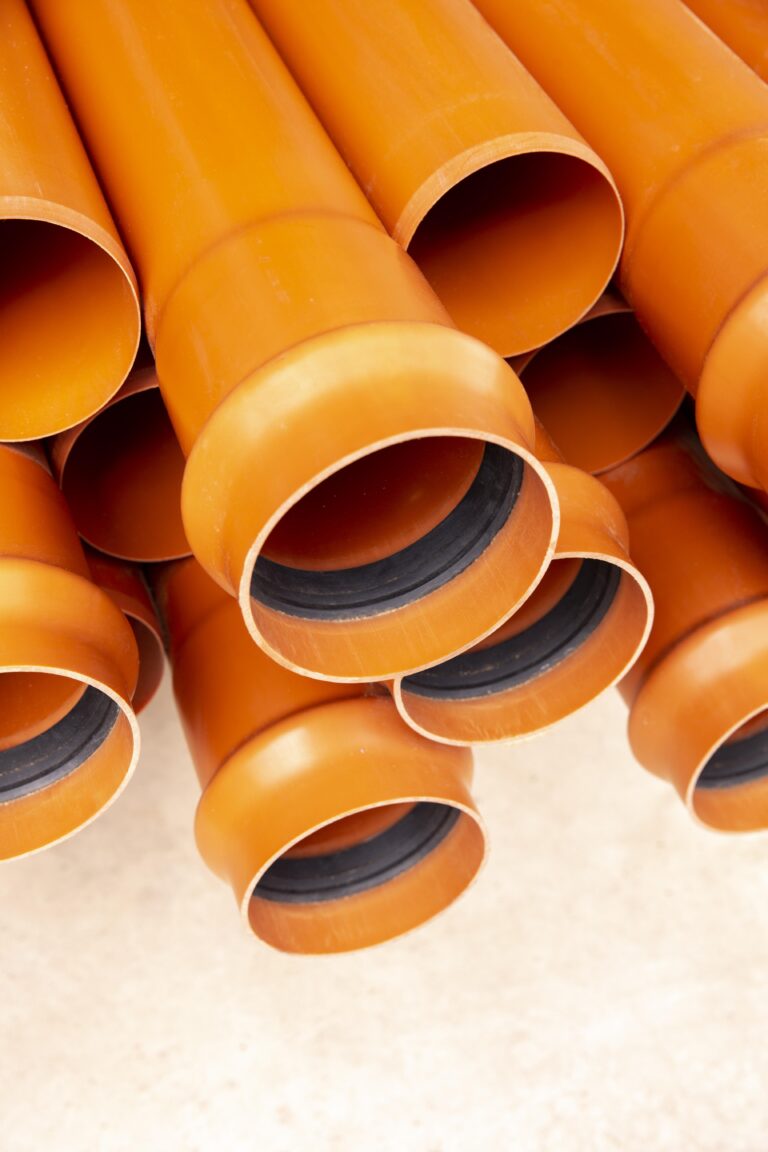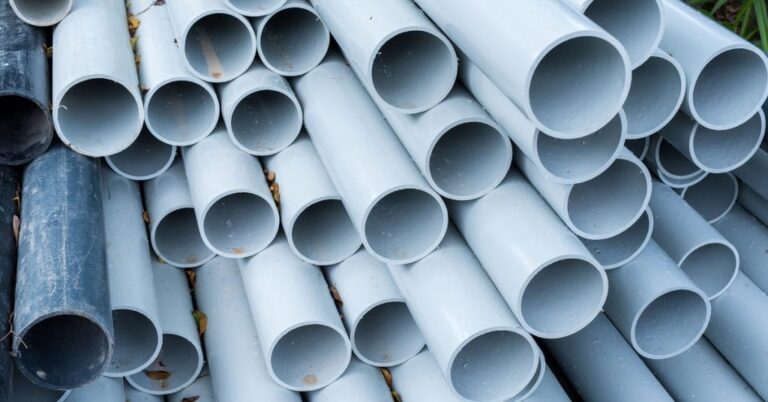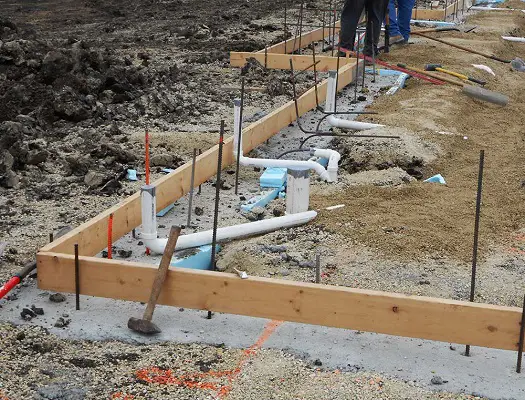What Is Used To Connect PVC Pipes?
PVC pipes are a popular choice for plumbing and drainage systems in both commercial and residential settings. To ensure the system works properly, it is important to have a reliable connection between the pipes. PVC pipes can be connected using a variety of methods, the most common of which is the use of PVC cement and primer. This method involves applying cement to the ends of the pipes and then connecting them using a special tool. Other methods of connecting PVC pipes include mechanical connections, compression fittings, and push-fit fittings. Regardless of the method used, it is important to ensure a secure connection to ensure the system works properly.
Overview of PVC Pipes and Connectors
PVC (Polyvinyl Chloride) pipes are popular among homeowners due to their durability and affordability. PVC pipes are used to transport a variety of liquids, including water, sewage, and other materials. But, to keep the pipes connected and working efficiently, the right connectors are essential. This article provides an overview of the various types of connectors used to connect PVC pipes, as well as tips on how to install them.
To connect PVC pipes, you’ll need the appropriate PVC connectors for the job. The most common connectors are slip or socket fittings, threaded fittings, and compression fittings. These connectors are available in different sizes and styles, so it’s important to select the correct fitting for the job. Slip and socket fittings are designed to fit together without any additional fastening, while threaded fittings require some form of thread sealant or lubricant. Compression fittings are used to join two pieces of pipe together without using glue or other adhesives.
When installing PVC connectors, it’s important to make sure that the connectors are properly fitted and sealed. This can be done using a variety of tools, such as pipe wrenches, PVC cutters, and pipe sealant. Once the connectors are correctly fitted and sealed, the pipes can then be connected.
PVC pipes and connectors are a reliable and cost-effective choice for many homeowners. With the right tools and knowledge, connecting PVC pipes is a straightforward process that can be completed quickly and easily.
Advantages of Using PVC Pipes
PVC pipes are a popular and cost-effective choice for many plumbing projects. They are strong, lightweight, and extremely versatile, making them an ideal choice for a variety of applications, including water supply, drainage, and sewage systems. But what exactly is used to connect PVC pipes? The answer is simple: PVC cement.
PVC cement is a type of adhesive specifically designed to bond PVC pipes and fittings together. This special adhesive creates a strong, watertight bond between two pieces of PVC pipe or fittings. It also helps to prevent leaks, so your pipes and fixtures stay secure and safe.
In addition to its strength and reliability, PVC cement also offers several advantages. It is water-resistant, meaning it will not be affected by exposure to moisture. This makes it suitable for use in bathrooms, kitchens, and other areas where water is present. It is also fast-drying and sets quickly, so you don’t have to wait for hours before use. Additionally, it is easy to use, and it is available in a variety of sizes and colors to match your needs.
Overall, PVC cement is an excellent choice for connecting PVC pipes and fixtures. It creates a strong, watertight bond and offers a variety of benefits, such as its water resistance and fast-drying properties. With its versatility and ease of use, it is one of the most reliable and cost-effective ways to connect PVC pipes.
Types of Fittings Used to Connect PVC Pipes
PVC pipes are incredibly durable and versatile, making them the perfect choice for a variety of plumbing applications. It’s important to understand the different types of fittings used to connect PVC pipes, as each type offers distinct advantages. PVC fittings come in a variety of shapes, sizes, and styles, but they can be classified into three main types: slip-on, compression, and barbed.
Slip-on fittings are the most common type of fitting used to join PVC pipes. They feature a cylindrical shape with a hollow center that slips directly over the end of the pipe. These fittings are incredibly easy to use and can be secured with a variety of adhesives.
Compression fittings are also commonly used to join PVC pipes. These fittings feature a threaded nut that compresses the pipe against a metal seal for a secure connection. Compression fittings are more secure than slip-on fittings, but they can be more difficult to install.
Finally, barbed fittings are used when joining two PVC pipes of different sizes. These fittings feature a barbed end that fits into the smaller pipe and is secured by a nut. Barbed fittings are designed to provide a strong, watertight seal with minimal effort.
Choosing the right fitting for your PVC pipes is essential for a successful plumbing application. Understanding the different types of fittings can help you make an informed decision and ensure that your project is a success.

Benefits of Different Types of Fittings
When connecting PVC pipes, you have many options for the fittings you use. PVC fittings come in a variety of sizes and types, and each has its advantages and disadvantages. Understanding the different types of fittings and their benefits can help you choose the best option for your project.
The most common type of fitting used with PVC pipe is a slip fitting. This is a simple and cost-effective solution that is easy to install and provides a secure connection. Slip fittings are easy to adjust for different-sized pipes, making them ideal for a variety of projects.
Another option is compression fittings, which use compression to make a secure connection. These fittings are great for areas that require a higher degree of strength and durability, such as in plumbing systems. They are also easier to install than slip fittings, meaning less time spent on installation.
Threaded fittings are another option for connecting PVC pipes. These fittings create a secure, watertight connection and are ideal for applications that require a higher level of strength. Threaded fittings are also very reliable, making them a great choice for areas with high water pressure.
Finally, push-fit fittings are the most convenient option for connecting PVC pipes. These fittings are quick and easy to install and require no tools, making them the ideal choice for DIY projects. They are also very secure and provide a watertight connection.
Understanding the different types of fittings and their benefits can help you choose the best option for your project. With the wide range of fittings available, you are sure to find the perfect solution for your needs.
Installation Tips for Connecting PVC Pipes
When it comes to connecting PVC pipes, the process is typically quite simple. However, ensuring a secure connection and avoiding leaks requires the proper materials and techniques. To ensure a successful installation, it is essential to understand the basics of how PVC pipes are joined together.
The first step is to select the appropriate connection. The most common type of connection used for PVC pipes is adhesive-based solvent welding. This process uses a solvent-based adhesive that is applied to the ends of the pipes, which are then joined together. The adhesive bonds the pipes together, providing a secure and permanent connection.
The second step is to prepare the pipes for connection. This includes cleaning the ends of the pipe with a soft cloth to remove any dirt or debris. Any burrs or rough spots should also be sanded away to ensure a smooth connection. Once the ends of the pipes are ready, it is important to ensure the connection is properly aligned.
The third step is to apply the adhesive. The adhesive should be applied to the outside of the pipe, as well as to the inner surface of the fitting. Care should be taken to ensure an even application. Once the adhesive is applied, the pipes should be joined together and held in place until the adhesive has dried.
By following these steps, PVC pipes can be joined together securely and without leaks. It is important to be aware of the local building codes, as the type of adhesive used may vary by region. Additionally, it is important to ensure the pipes are properly sized and that the connection is aligned correctly. With the right materials and techniques, connecting PVC pipes is an easy process.
Maintenance and Troubleshooting Tips for PVC Pipe Connections
PVC pipes are an essential part of many plumbing systems, but due to their material properties, they can be difficult to connect. To ensure that your PVC pipe connections are secure, it is essential to use the right materials and methods. This article will discuss the various materials and methods used to connect PVC pipes, as well as some maintenance and troubleshooting tips to help you keep your PVC pipe connections in top condition.
To ensure a secure connection between two PVC pipes, the most common material used is PVC cement. PVC cement is a special type of adhesive that is designed to form a strong bond between two pieces of PVC. It is important to note that PVC cement should not be used with other types of pipe, as it may cause corrosion or other damage. Additionally, it is important to make sure that the two pieces of pipe are clean and dry before applying the cement.
In addition to PVC cement, there are also other materials and methods used to connect PVC pipes, including compression fittings, slip joints, and threaded fittings. Compression fittings are the most common type of connection, as they are easy to install and require no additional tools. Slip joints are also used, but they are typically used in situations where flexibility is needed. Threaded fittings are used for more permanent connections, such as in outdoor applications.
To keep your PVC pipe connections in top condition, there are a few maintenance and troubleshooting tips to keep in mind. Firstly, it is important to make sure that the pipe and connection are free of debris and dirt. Additionally, it is important to check the pipe connections regularly to ensure that they are secure and intact. If there is any sign of leakage, it is important to act quickly and replace the connection or pipe as soon as possible. Finally, if the PVC pipe connections are in an area that is exposed to extreme temperatures, it is important to use special insulation to protect the pipes.
By following these tips and using the correct materials and methods, you can ensure that your PVC pipe connections remain secure and in top condition. With proper care and maintenance, your PVC pipes will serve you for many years to come.
FAQs About the What Is Used To Connect PVC Pipes?
1. What type of glue should be used to connect PVC pipes?
A: PVC cement should be used to connect PVC pipes.
2. What type of tools are needed to connect PVC pipes?
A: A hacksaw, PVC primer, and PVC cement are the tools needed to connect PVC pipes.
3. Is it necessary to use a coupling when connecting PVC pipes?
A: Couplings are not required when connecting PVC pipes, but are recommended to ensure a secure connection.
Conclusion
PVC pipes are connected using a variety of fittings, such as couplings, elbows, tees, and adapters. Depending on the type of connection needed, a PVC cement adhesive and primer can be used for a permanent seal, while a rubber gasket or compression fitting can be used for a temporary seal. The type of fittings and sealant used will depend on the type of PVC pipe being connected and the application.







